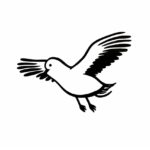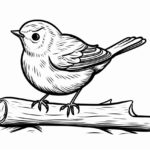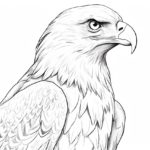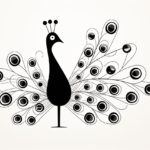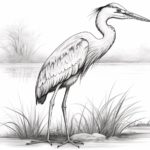Seagulls are beautiful and graceful creatures, known for their effortless gliding and keen connection to the sea. Whether you’re sketching a serene coastal scene or simply drawn to the motion of birds in flight, learning to draw a flying seagull can be both relaxing and rewarding. Their broad wings, streamlined bodies, and smooth movements offer an excellent opportunity to practice capturing motion, proportion, and lightness in your artwork.
In this step-by-step guide, we’ll walk through the process of how to draw a flying seagull from start to finish. You’ll learn how to sketch the basic shape, define the bird’s posture in mid-air, and refine the details that bring it to life—like the curve of the wings, the tilt of the head, and the soft feathers that trail in the wind. Whether you’re a beginner or just looking to refine your bird-drawing skills, this tutorial will help you express the elegance of a soaring seagull with confidence. So grab your pencil, paper, and a sense of adventure—let’s get started!
Materials Required:
How to Draw a Flying Seagull: A Step-by-Step Guide 

Drawing a flying seagull is a wonderful way to explore the beauty of birds in motion. With graceful wings and a streamlined body, seagulls make for an elegant subject that can help sharpen your skills in form, proportion, and movement. In this guide, you’ll learn how to draw a seagull in mid-flight—from its sweeping wings to the fine details that bring it to life. Let’s begin!
Step 1: Sketch the Body Shape
Start with a light oval shape in the center of your paper to represent the seagull’s torso. This basic form will serve as the foundation for the rest of the bird’s body. Don’t press too hard—keeping your lines soft allows for easy adjustments later.
Step 2: Add the Wing Structure
From each side of the oval, draw long, arched lines that sweep outward and upward—these form the basic outline of the wings. Think of each wing as an elongated “M” shape with a gentle curve. Seagull wings are long and slightly pointed at the tips, so give them a sense of motion and lightness.
Step 3: Shape the Head and Beak
Near the front of the oval (the narrower end), sketch a small circle for the head.
- From the head, draw a slightly curved triangle that points forward and downward—this is the beak.
- Make sure the size of the head and beak are in proportion to the body to maintain a natural look.
Step 4: Add the Eye and Feather Hints
Inside the head, place a small oval for the eye. Leave a tiny white spot to indicate light reflection and bring a sense of life to the bird.
- Lightly draw curved lines around the neck and chest to hint at overlapping feathers.
- Keep the strokes soft and flowing.
Step 5: Draw the Tail Feathers
At the back of the seagull’s body, sketch a wide, tapering triangle pointing outward to form the tail.
- Use a few slightly curved lines to divide the tail into individual feathers, adding balance and grace to your drawing.
Step 6: Refine the Wing Feathers
Now let’s give the wings texture and detail:
- Inside each wing, draw a series of gently curved lines flowing from the base toward the tip.
- These lines represent the layers of feathers—start broader at the base and taper them as you move outward.
- Keep the direction consistent with the wing’s curve.
Step 7: Add Depth with Shading
Begin shading the areas that would be naturally in shadow, such as:
- The underside of the wings
- The tail
- Areas near the body where the wings connect
Use light pencil strokes or soft blending to build subtle gradients and suggest volume.
Step 8: Enhance the Feathers and Beak
Use short, firm strokes to darken the feather outlines along the wings and body.
- Add definition to the beak, giving it a smooth, slightly curved shape.
- You can also deepen the eye detail by darkening the center and leaving a tiny highlight.
Step 9: Refine the Eye and Final Details
Take a closer look and refine the eye by:
- Drawing a small dot inside the white reflection area
- Softly outlining the eye to give it more focus
Now go back over your drawing to add or clean up fine lines, adjust any feather details, and gently reinforce shadows if needed.
Step 10: Ink and Clean Up (Optional)
If you’re happy with your pencil work, you can now ink your drawing:
- Use a fine-tip pen to carefully trace over the final lines.
- Once the ink is dry, gently erase all remaining pencil marks to leave a crisp, clean drawing.
- Be extra careful not to smudge the ink!
Conclusion: Let Your Creativity Take Flight!
Congratulations—you’ve just drawn a flying seagull! You’ve captured not only its form but its elegance in mid-air. By following these steps, you’ve practiced proportions, movement, texture, and shading—all essential skills for any aspiring artist.
With time and practice, your seagulls will gain more personality and precision. Try drawing them from different angles, in flocks, or against dramatic seascapes for added storytelling. Keep sketching, exploring, and letting your creativity soar sky-high!
Fun Facts About Seagulls
- They’re not just “sea” birds. Seagulls can be found near oceans, lakes, rivers, landfills, and even parking lots—they’re nothing if not adaptable.
- Seagulls are highly intelligent and have been seen using tools, such as dropping clams onto rocks to crack them open.
- They can drink saltwater! A special gland above their eyes helps remove the salt from seawater so they stay hydrated at sea.
- Seagulls have a wide range of vocalizations—some sound like laughter, others like an angry toddler with wings.
- They’re expert fliers, able to hover in place, ride ocean winds for miles, and even perform aerial acrobatics when stealing snacks.
- A group of seagulls is called a colony when nesting, or a squabble when they’re, well, squabbling.
- Seagulls are monogamous, often mating for life and returning to the same nesting sites year after year.
- They feed on everything from fish and crabs to french fries, chips, and ice cream cones if you’re not watching closely.
- Young seagulls don’t develop their full adult plumage for several years—they go through a scruffy “teenage” phase first.
- Some cultures view seagulls as symbols of freedom, adaptability, and resourcefulness—basically the feathered MacGyvers of the sky.
Suggested Scenes and Settings for Seagull Drawings
- Beach Bandit: Draw a bold seagull in mid-snack-theft, flying off triumphantly with a stolen sandwich or french fry, beachgoers in the background looking shocked.
- Perch with a View: Illustrate a lone seagull perched atop a wooden post, gazing out over a misty harbor at sunrise or sunset.
- Seagull Skyscraper Life: Show a city-dwelling seagull perched on a tall building, surveying traffic and pigeons like it owns the skyline.
- Stormy Soar: Depict a dramatic scene with seagulls riding the wind during a seaside storm, wings outstretched as waves crash below.
- Seagull Dance-Off: Create a playful moment with two seagulls squawking and strutting around in a comical face-off over a snack.
- Nest on a Rooftop: Illustrate a small family of gulls nesting on a city rooftop, complete with feathers, trash scraps, and curious chicks.
- Seagulls and Sailboats: Draw a peaceful seaside scene with sailboats in the distance and gulls gliding smoothly over the waves.
- Sunbathing Gulls: Picture a row of lazy gulls soaking up the sun on a dock, one dozing with its beak tucked under a wing.
- Frozen Fish Chase: Imagine a gull diving dramatically toward a fish flung from a fisherman’s net—splash, chaos, success.
- Fantasy Gulls: For a whimsical twist, turn seagulls into mail carriers, sky pirates, or feathered sidekicks in a magical coastal world.



